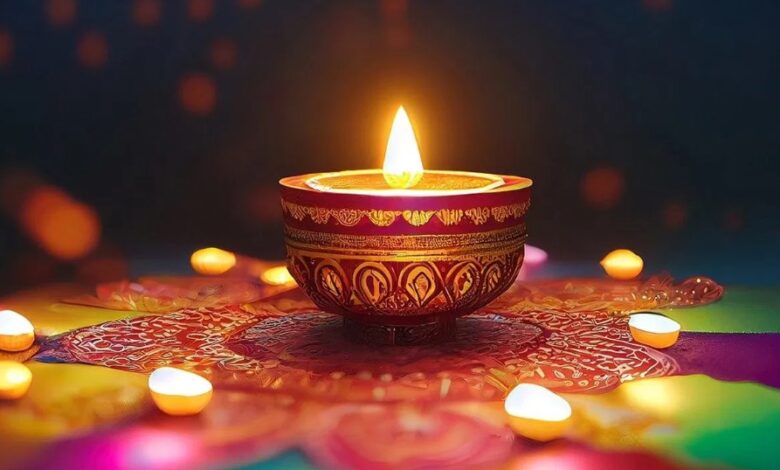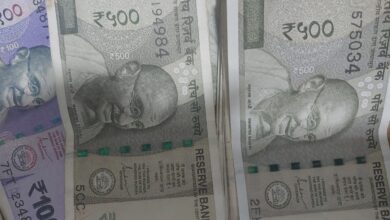Diwali: know the myths and legends surrounding the ‘festival of lights’
The main story linked with Diwali revolves around Rama's homecoming to Ayodhya, which is described in the ancient epic Ramayana.

Diwali, the festival of lights, celebrates the triumph of good over evil and holds various legends in Hindu mythology. It is rich with captivating myths and legends, offering insights into various cultural narratives. Among these, there are five significant tales that every student should know about. These include the story of Lord Rama’s return to Ayodhya, the emergence of Goddess Lakshmi from the churning of the milky ocean, signifying the arrival of fortune and abundance, the home coming of the Pandavas from their exile in the Mahabharata, showcasing the victory of the righteous over injustice, the myth of Lord Krishna defeating the demon king Narakasura and the tale of Goddess Kali’s fierce battle against the demon Raktabija, where she conquered evil.
All these myths and legends surrounding Diwali represent the power of divinity over malevolence. Understanding these myths not only enhances cultural knowledge but also imparts valuable lessons of resilience, victory over adversity, and the eternal prevalence of good over evil.
Lord Ram’s return to Ayodhya
The main story linked with Diwali revolves around Rama’s homecoming to Ayodhya, which is described in the ancient epic Ramayana. According to this tale, Rama, along with his brother Lakshman and his wife Sita, was sent into exile from the kingdom of Ayodhya for 14 years. They lived happily in the forest by a river until Sita was taken by the demon king Ravana. Rama searched extensively for Sita and eventually found her, defeating Ravana and rescuing her. After this, Rama and his companions returned to Ayodhya to rightfully claim the throne, receiving a warm and joyous welcome from the people.
Diwali commemorates Rama’s return to Ayodhya, symbolizing the victory of good over evil. It’s believed that the day of the festival aligns with Rama’s successful comeback after defeating the demon king Ravana.
Mahabharata and Diwali
In our epic, Mahabharata The Pandavas, five noble sons of King Pandu, faced a period of exile as a consequence of a dice game loss, enduring twelve years away from their kingdom. Their return was a momentous event marked by immense joy and celebration. As they arrived back home, the city was adorned with radiant lamps, symbolizing the victory of righteousness and the people’s deep affection for the Pandavas. This auspicious return coincided with the Diwali festival, making it a time of great significance, where the illumination of lamps not only represented the joyous occasion but also signified the victory of light over darkness, reflecting the eternal message of hope, righteousness, and the ultimate victory of good over evil.
Goddess Kali and Diwali
In West Bengal, the myth of Goddess Kali intertwines deeply with the celebrations of Diwali. Legend has it that during a great battle, demons threatened to overpower the gods. The intensity of the conflict grew as the demon king, Raktabija, had the power to replicate himself from each drop of his spilled blood, making it impossible to defeat him. In response, Goddess Kali emerged ferociously from Goddess Durga’s forehead, ready to confront the malevolent forces. She engaged in a fearsome battle, and in her divine wrath, she annihilated Raktabija by drinking his blood and preventing its replication. Kali’s victory symbolized the triumph of good over evil. During Diwali in West Bengal, devotees celebrate Kali Puja, honouring the goddess and seeking her blessings for strength, protection, and the eradication of negativity from their lives, marking the festival as a time of spiritual significance and renewed hope.
Goddess Lakshmi appearance from milky ocean
Lakshmi, the goddess of fortune, holds a significant place in the celebrations of Diwali, and her story is deeply intertwined with the essence of the festival. According to the tale, there was a time when the god Indra’s arrogance led Lakshmi to depart from the divine realm and take refuge in the milky ocean. Her absence plunged the world into darkness, and the gods were determined to bring her back. After an extensive period of churning the milky ocean, lasting for a thousand years, Lakshmi was eventually reborn. She emerged from the depths, seated gracefully on a magnificent lotus flower, once again bestowing her blessings of prosperity and good fortune upon the world. During Diwali, people illuminate the night to guide and welcome Lakshmi into their homes, seeking her blessings for a year filled with prosperity and abundance.
Lord Krishna’s triumph over Narakasura
In the southern regions of India, the story of Lord Krishna’s triumph over the formidable demon king Narakasura holds a special place in the celebration of Diwali.
According to this legend, Narakasura had a blessing from Lord Brahma that he could only be vanquished by the hand of his mother. However, Narakasura believed that she would never harm him. Interestingly, his mother was reborn as Krishna’s wife, Satyabhama. When Narakasura severely injured Krishna during a battle, Satyabhama ultimately dealt the fatal blow to Narakasura. In his final moments, Narakasura urged that instead of mourning his death, people should celebrate with life and colors, which aligns with the vibrant celebrations witnessed each year during the Diwali festival. This legend reflects the essence of overcoming darkness and evil with light and joy during the Diwali festivities.
(Source: The Times of India)

